Top 10 Most Beautiful Historical Sites in Bulgaria
Bulgaria is a country with a varied history and a range of fascinating historic sites. They include the medieval fortresses of Tsarevets Castle and ... read more...Belogradchik Fortress and the religious sites at Boyana and Chiprovtsi. Bulgaria also hosts spectacular burial sites, including the Thracian Tomb of Kazanlak which dates to the 4th century BC. Whether you’re planning a historically-informed trip to Bulgaria or interested in the history of the country, take a look at the 10 the most beautiful historical sites in Bulgaria that Toplist collected below.
-
Perperikon was an important Thracian holy sanctuary which became a Roman town around the 1st century BC, and was later the site of a medieval fortress. Inhabited since 5000 BC, Perperikon became home to the Temple of Dionysus, legendary for being the place of great prophecies. One of the most famous of these involved Alexander the Great, who was told that he would conquer the world in 334 BC, prior to his invasion of Persia.
In a later continuation of the theme, Gaius Octavius – father of the Emperor Augustus – is also said to have consulted the oracle in 59 BC, and was told his son would rule the world. Whilst it was the Thracians who built the sanctuary, it was preserved and expanded under the Romans, who developed Perperikon into a larger settlement with an acropolis and a giant multi-storey palace. The remains of these structures have been excavated and can still be explored today.
Today visitors can wander through historic Perperikon, set on a high rocky hill overlooking beautiful countryside. Its fascinating ancient ruins may be explored, which include the remains of important public buildings, houses, stairways, altars, tombs and walls. It is advised you hire a guide to interpret them, as there are no information boards explaining what each ruin is. As the largest megalith archaeological site in the Balkans, Perperikon is an excellent place to explore the area’s ancient past and visit a fascinating ruined city once revered as sacred. Perperikon features as one of list most beautiful historical sites in Bulgaria.
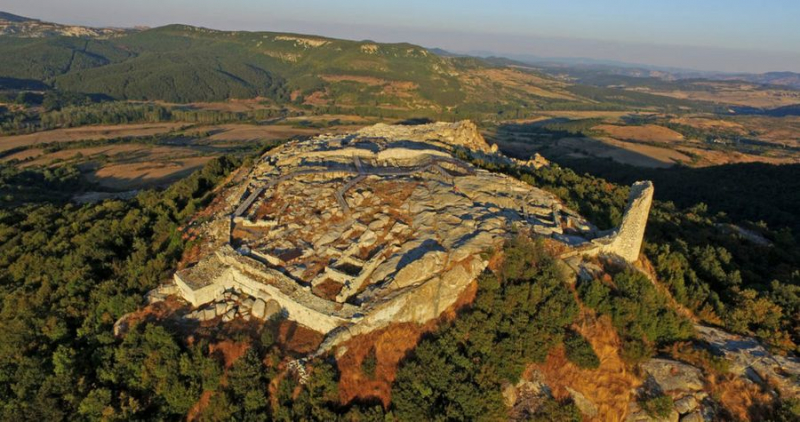
experitour.com 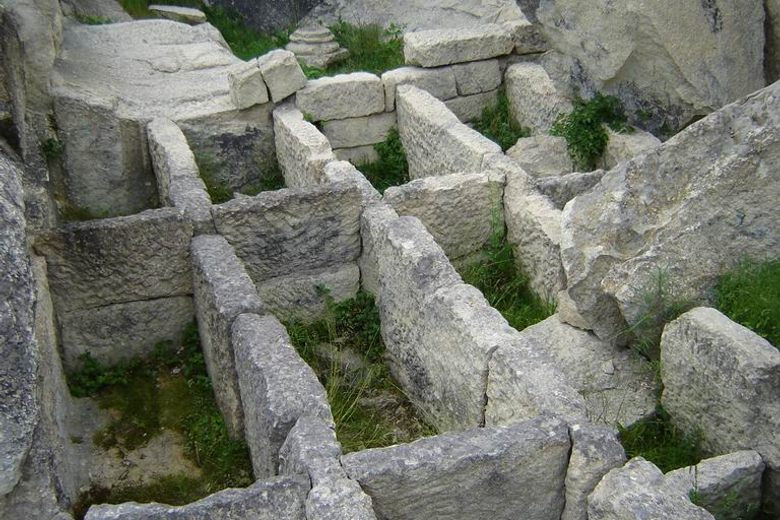
Atlas Obscura -
The Eastern Mound is an archaeological site in Bulgaria comprised of the beautifully preserved gravesite and chariot of an elite Thracian warrior. The Thracians were tribes who existed at the same time as the better known Greeks and Roman civilisations and were often in conflict with these cultures. Dating back to the 1st century AD, the Eastern Mound was only discovered in 2008. Now, visitors to this site can see the remains of this grave site in their original location, along with his horses and a dog.
The Thracian’s chariot is also on display, complete with an intact decoration. It is distinctive not only for having 4 intact wheels but for the larger-than-usual size of these wheels. The burial mound occupied around 24 hectares of land, and was originally also a prehistoric settlement, inhabited for around 3,000 years. Between 1936 and 1984, archaeologists excavated the site, finding an engraved round seal from the earliest period of writing. The seal was believed to be a sign of status given to public servants and used during religious ceremonies. The site also contained a basilica housing 16 tombs and fortifications.
In 2008, excavations began on ‘The Eastern Tomb’. The large form running north to south measured in total 77 meters in diameter, and inside, archaeologists found a vaulted brick tomb. Whoever was buried there was very wealthy, as they were buried along with 2 silver chalices were found inscribed with images of the god Eros, as well as glass plates, coins, silver anklets. Today, visitors to the Eastern Mound can view the original Thracian chariot where it was found, ‘pulled’ by the eerie skeletal forms of 2 horses, and an exact replica of the bronze trim, found scattered across the site.
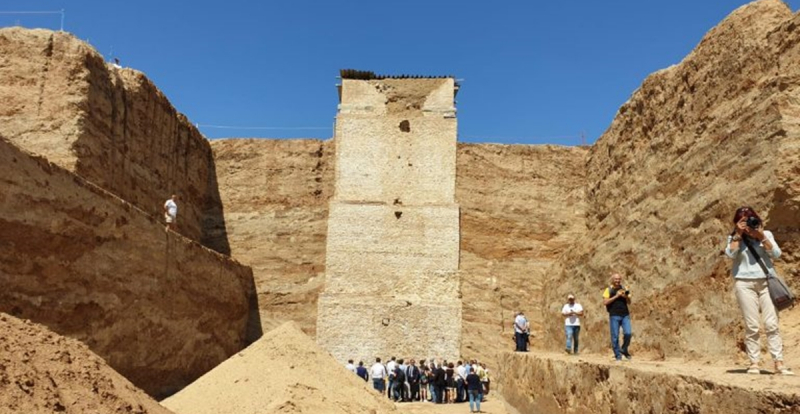
The Sofia Globe 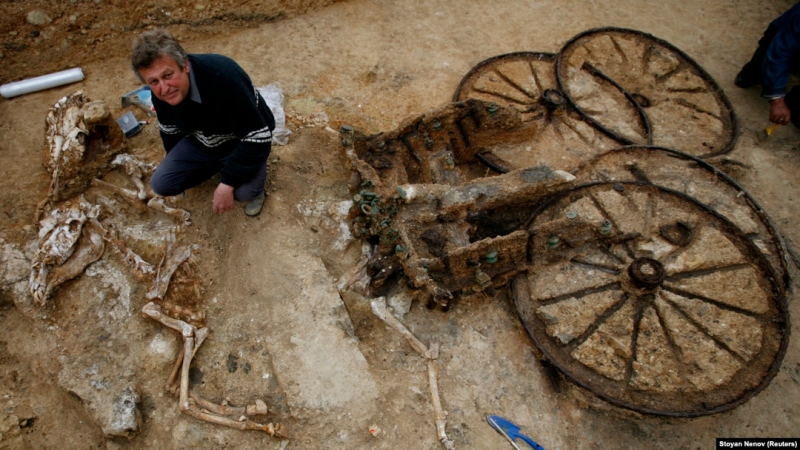
Radio Free Europe -
Pliska is an archaeological site in Bulgaria housing the ruins of what was the country’s first capital. Spread over 23 square kilometres and with a complex system of fortifications, Pliska was an impressive early medieval city. It acted as the main city of the First Bulgarian Empire from 681AD until 893AD, when the capital was moved to Preslav by Tsar Simeon I. This site features as one of list most beautiful historical sites in Bulgaria.
Pliska was the first capital of the First Bulgarian Empire. It was established in 681 after the Bulgars defeated the Byzantines. The location was specifically chosen as a vantage point, the valley surrounded by the hillsides of neighbouring plateaus appealed to the proto-Bulgarians as a favorable place to pasture their herds. The location was also at an intersection of major thoroughfares. Pliska changed significantly when Bulgaria accepted Christianity in 864 under King Boris I.
The pagan temples were rebuilt as Christian churches were built, the most impressive being The Great Basilica, the remains of which can still be seen today. In 889, King Boris established a monastery, and its first prelate was the king’s oldest son Vladimir. However, when Vladimir attempted to re-introduce paganism he was blinded and imprisoned in a dungeon.
Today, visitors can tour Pliska’s remains including some of its defences and a church known as the Big Basilica. The Pliska National Historical and Architectural Reserve was declared an important national cultural and historical landmark in Issue № 46 of the State Decrees for 1970. There is a small museum located at the northeastern corner of the palace that displays artefacts discovered in the region, and in front of the museum, there is a rest area that offers refreshments. The Pliska Reserve is maintained by the Shumen Regional Museum of History.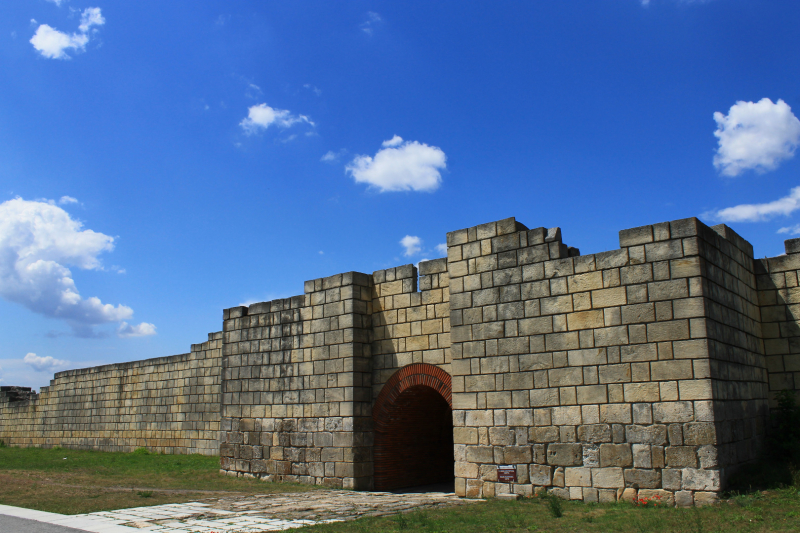
Wikipedia 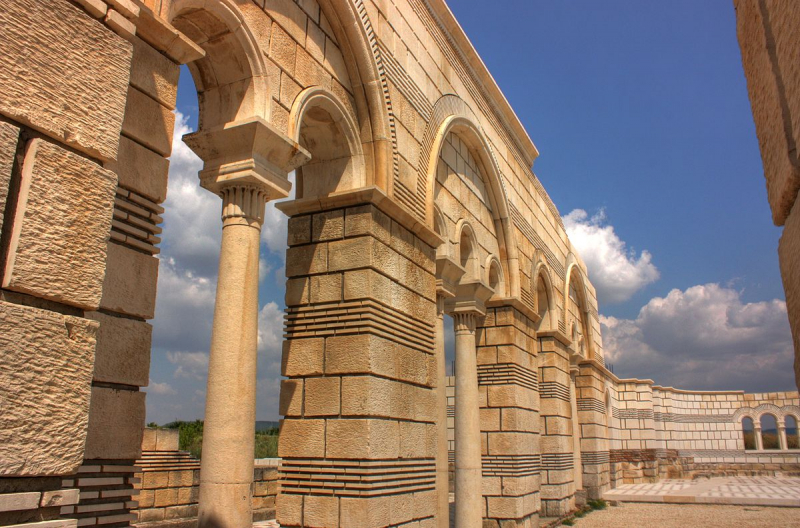
Wikipedia -
The Baba Vida Fortress is hailed as one of the most well-preserved medieval castles in Bulgaria. Located in the northwest of the country, the Baba Vida Fortress was first built in the 10th century atop the ruins of the Roman watchtower of Bononia, itself built in the 1st century AD on the remains of a Thracian settlement.
As the central defensive mechanism of Vidin, the Baba Vida Fortress withstood various attacks and sieges – such as by the Byzantine forces of Basil II. Conversely, it has also been captured by different armies including the Hungarians and the Ottomans, the latter of whom used it as a munitions store and prison. In the 14th century, it also played the role of royal residence of Tsar Ivan Stratsimir. Over the course of its existence, the Baba Vida Fortress been built and rebuilt on many occasions, with elements of its past visible throughout.
Today, this restored site and museum has a main courtyard surrounded by an inner and outer wall as well as four towers. The name “Baba Vida” refers to a legend about three Bulgarian sister princesses, two of whom married rashly and wasted their inheritances while the third – Vida – remained single and built the castle. The Baba Vida Fortress features as one of list most beautiful historical sites in Bulgaria.
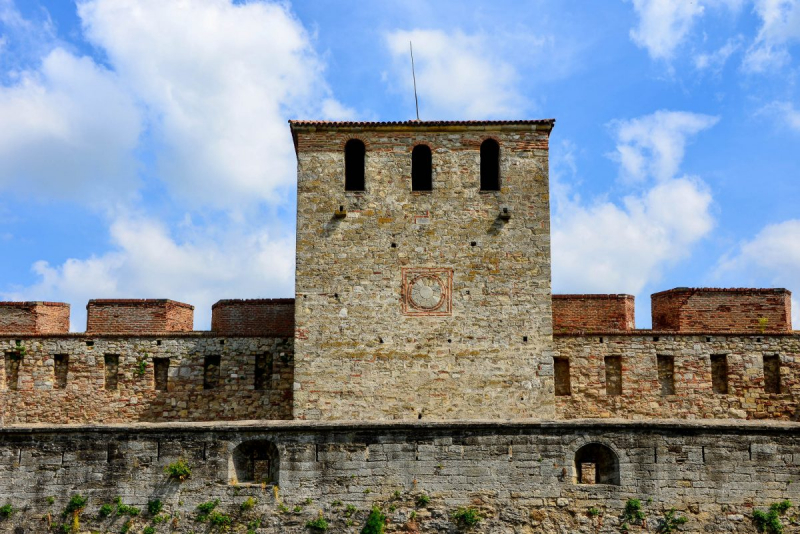
Franks Travelbox 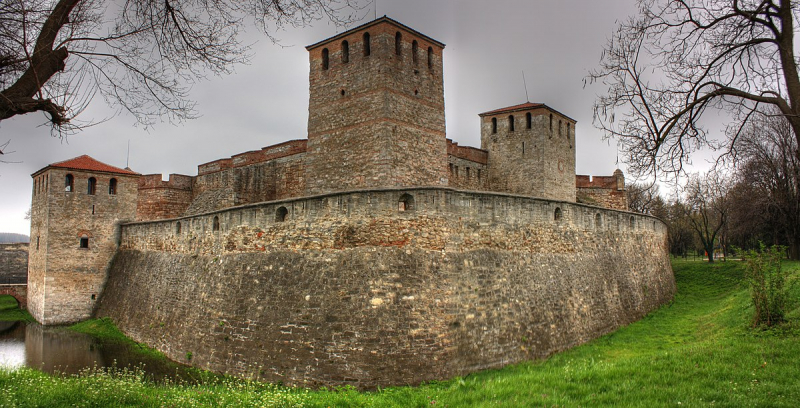
Wikipedia -
Standing on the northern slopes of the Balkan Mountains, Belogradchik Fortress – also known as Belogradchik Kale or as Kaleto – is an impressively well-preserved fortification in north-western Bulgaria. Today, Belogradchik Fortress is open to the public and it features as one of our Top Tourist Attractions of Bulgaria. The Romans initially founded Belogradchik Fortress as a stronghold from the 1st to the 3rd centuries AD, building the highest part of the fortress known as the Citadel. The mission of the fortress was to control the road from the town of Ratsiaria. Over the centuries, Belogradchik Fortress has been used by a succession of different forces including the Byzantines.
The 14th century saw the site fall under the remit of Tsar Ivan Sratsimir’s Vidin kingdom, during which time it was enlarged and strengthened. Nevertheless, at the end of this century, Belogradchik Fortress was captured by the Ottomans, a move which saw the site used to suppress local uprisings and protect this corner of the Ottoman Empire. During the 19th century, Belogradchik Fortress continued to be used for military and defensive purposes. In 1850, Belogradchik Fortress played a sinister role in suppressing the Belogradchik uprising, it being the place where activists were decapitated. In 1885, the fortress was also used in the Serb-Bulgarian War.
Today, a monument stands in recognition of the Belogradchik Uprising where one of the leaders was beheaded within the outstandingly well-preserved remains of the fortress. Visitors can clearly see the openings for guns in the fortress walls. From the highest point of Belogradchik Fortress called ‘First Slab’, you get a beautiful view reaching across the mountains. You can also grab an audio-guide from the ticket booth and follow the history of the site around as you wander. Be sure to bring comfortable shoes for walking across the rocky ground while exploring.
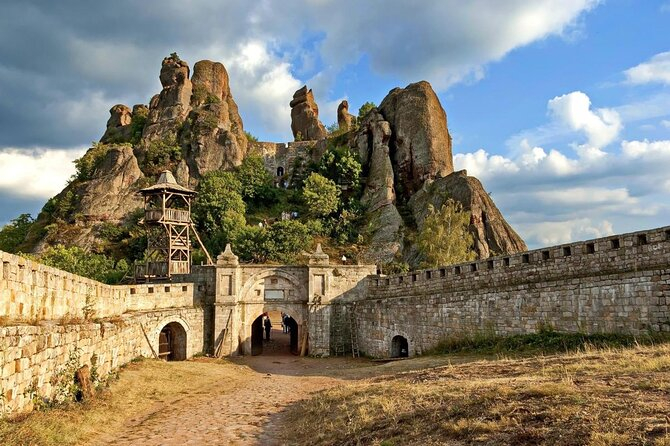
HeritageDaily 
Viator -
The Thracian Tomb of Kazanlak is a late 4th century BC burial site located in Bulgaria and forms part of the ancient Thracian settlement of Seuthopolis. The Thracian Tomb of Kazanlak is perhaps best known for its incredibly well preserved examples of Thracian artwork, including wall frescoes and murals. Discovered during the construction of a bomb shelter in 1944, the tomb site is one element of a larger Thracian necropolis which contains seven brick tombs. The double frieze and and mural on the dome depict a range of battle scenes, feasts and chariot races – all key parts of life at the time.
It’s believed the tomb was constructed in line with the cult of the dead. The three distinct spaces: an antechamber, corridor and burial chamber suggest that those buried here were interred in line with traditional customs about journeying to the afterlife. The Thracian Tomb of Kazanlak was declared a UNESCO World Heritage historic site in 1979. The site is one of a number of Thracian tombs found in the area – which is often known as the Valley of the Thracian Kings and many of the artefacts from this site and others can be found on display in Kazanlak Museum.
To ensure continued conservation, access to the original tomb is limited, however visitors can explore a recreation of the tomb located nearby. Information about the history of the Thracian Tomb of Kazanlak is available on site in both English and Bulgarian. A small entry fee is charged. The tomb and museum are open daily, 9am-5pm.
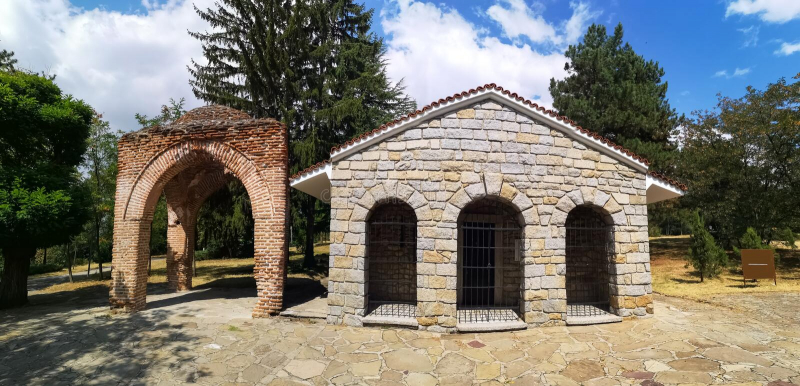
Dreamstime.com 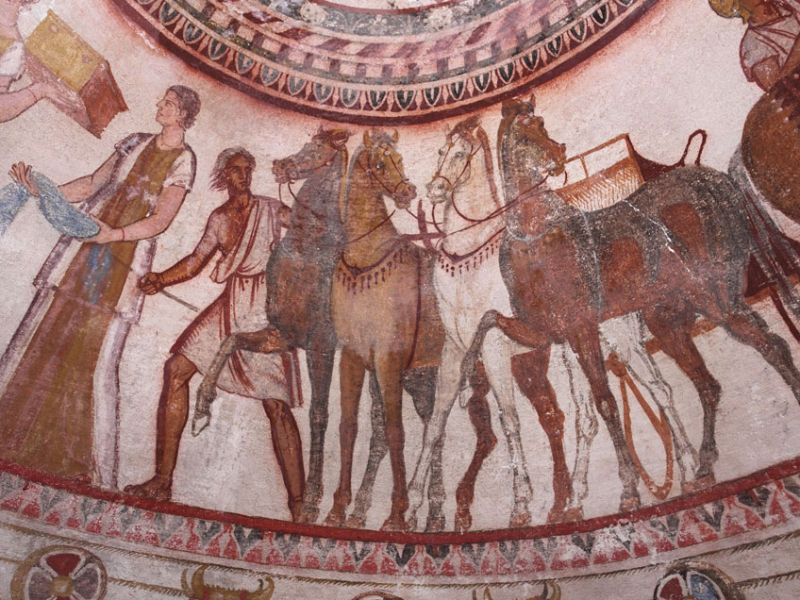
Dreamstime.com -
One of most beautiful historical sites in Bulgaria, Tsarevets Castle in the city of Veliko Tarnovo is a reconstructed medieval fortress complex and was the centre of the Second Bulgarian Empire, which ruled the region from the 12th to 14th centuries AD. First constructed on the site of an earlier Byzantine fort, by the late 12th century Tsarevets Castle had become the headquarters of the Bulgarian forces, who overthrew Byzantine rule in the region. For the next two centuries, Tsarevets Castle housed the royal palaces and administration of the new regime.
However, by the late 14th century the continued rise of the Ottoman Empire put increasing pressure on the Bulgarian forces and, along with the region as a whole, Tsarevets Castle was captured by the Ottoman army. For much of the medieval period Tsarevets Castle continued to flourish as a centre of religion, trade and administration. In the 20th century significant restoration projects were undertaken at Tsarevets Castle, including the restoration of the Patriarch’s Palace and Baldwin’s Tower.Open between 8am and 7pm each day, visitors can tour the castle complex and visit the restored Baldwin’s Tower from where there are great views of the locality. Psychedelic sound and light shows are also held within Tsarevets Castle on certain evenings. Watch your step whilst exploring the remains of over 400 houses, 18 churches and the royal palace, as the site is dotted with potholes and damaged steps.
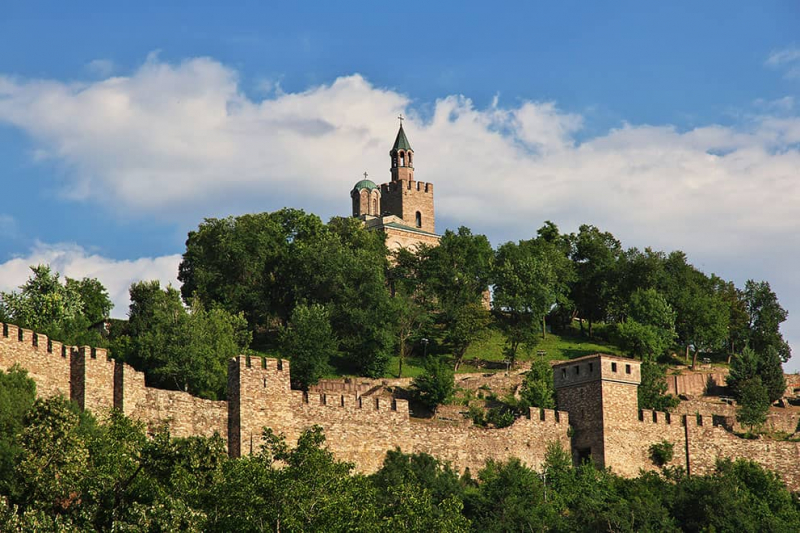
Flickr 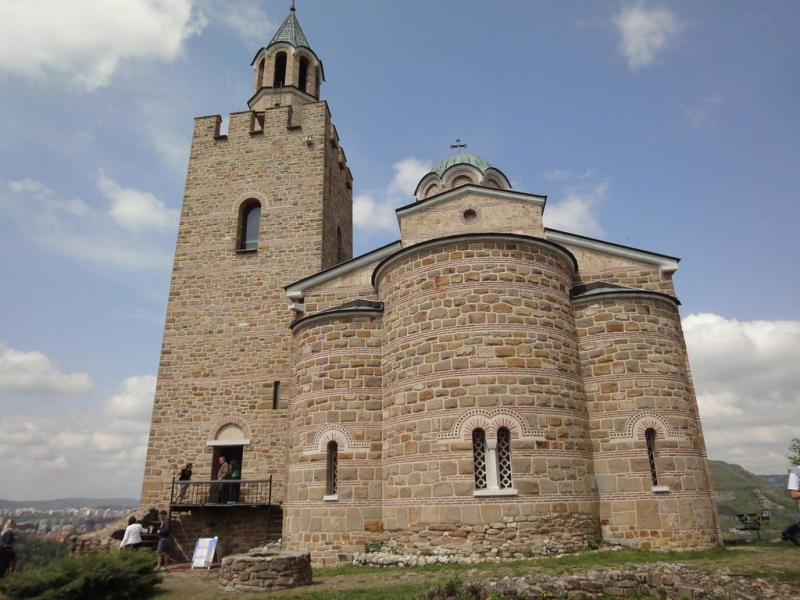
Flickr -
Boyana Church was built over 3 distinct periods, beginning in the 10th century and finally finished during the mid-19th century. The 13th century frescoes themselves are considered to be an historical treasure and an excellent example of the artwork of the period. Today, the Boyana Church is a UNESCO world heritage historical site and is open to the public, featuring as one of our top visitor attractions in Bulgaria.
The initial Boyana Church was built during the late 10th century as a private chapel which stood within the Boyana fortress in the shape of a cross. Later, during the 12th century Second Bulgarian Empire period, the Boyana Church complex was expanded and the famous frescoes were added in 1259. These extraordinary frescoes, layered over earlier paintings depict the life of Saint Nicholas while including aspects of contemporary life, populated with over 240 figures. Finally, in the mid-19th century, further work was undertaken using donations from the local community, leaving us with the Boyana Church as it is known today.
Today, the Boyana Church is under the protection of the National Historical Museum of Bulgaria, and is open to visitors every day from 9am to 6pm. Inside remain the centuries old frescoes of bright and rich colours depict 89 scenes full of vivid characters, including donors to the church and Venetian mariners. In order to protect the paintings, access is limited to groups of 8 visitors and by 10-minute guided tour only. However, the nearby Boyana Church Museum contains further information on the history of the complex and visitors can buy a combined ticket to both sites.
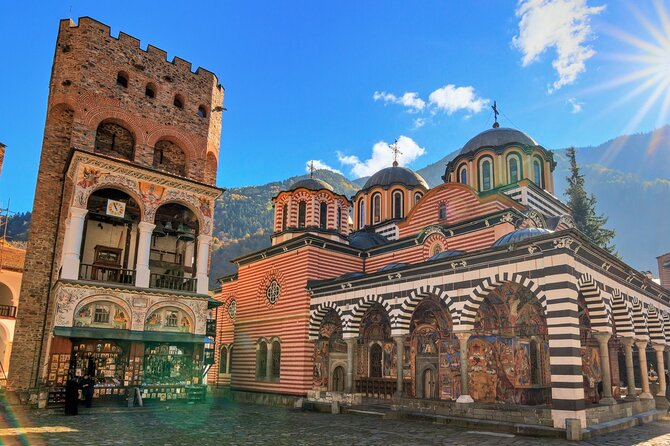
Touriosity 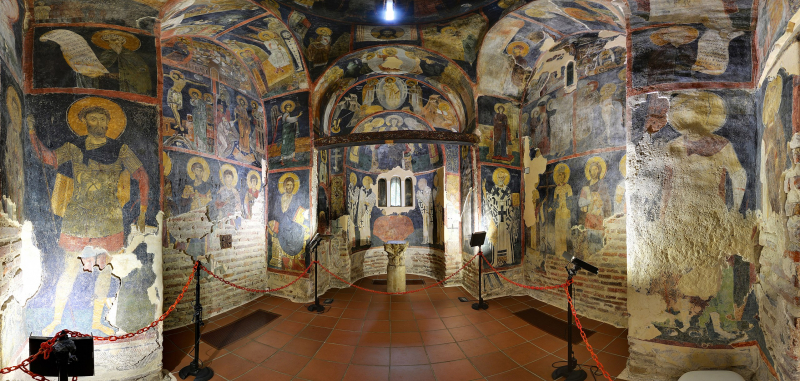
Viator -
The Chiprovtsi Monastery is a small monastic centre which lies about 5km from the town of Chiprovtsi, dedicated to St. John of Rila. Chiprovtsi is a small town in northwestern Bulgaria, administratively part of Montana Province. It lies on the shores of the river Ogosta in the western Balkan Mountains, very close to the Bulgarian-Serbian border. A town of about 2,000 inhabitants, Chiprovtsi is the administrative centre of Chiprovtsi Municipality that also covers nine nearby villages. Chiprovtsi is thought to have been founded in the Late Middle Ages as a mining and metalsmithing centre.
The first building to be constructed on the site was probably built in the tenth century during the First Bulgarian Empire, when the area became increasingly Christianised. The Chiprovtsi Monastery has since served as a centre of learning and religious study and is still a functioning monastery today. The monastery complex consists of a church, monastic cloister, small cemetery and ossuary on the ground floor, a chapel on the second, tower-bell on the third floor. The complex is surrounded by a stone wall with three entrances. Today, it is possible to visit the Chiprovtsi Monastery, though keep in mind that, as this is a working monastery, visiting times and access may be limited.
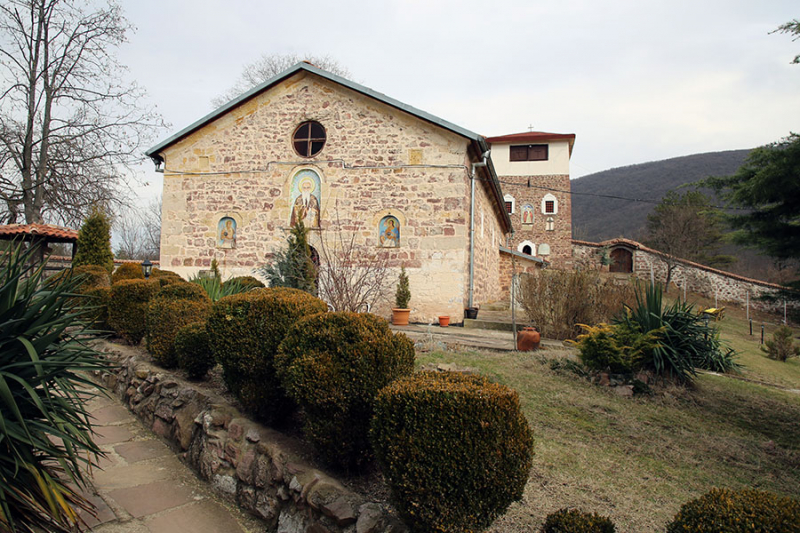
Wikimapia 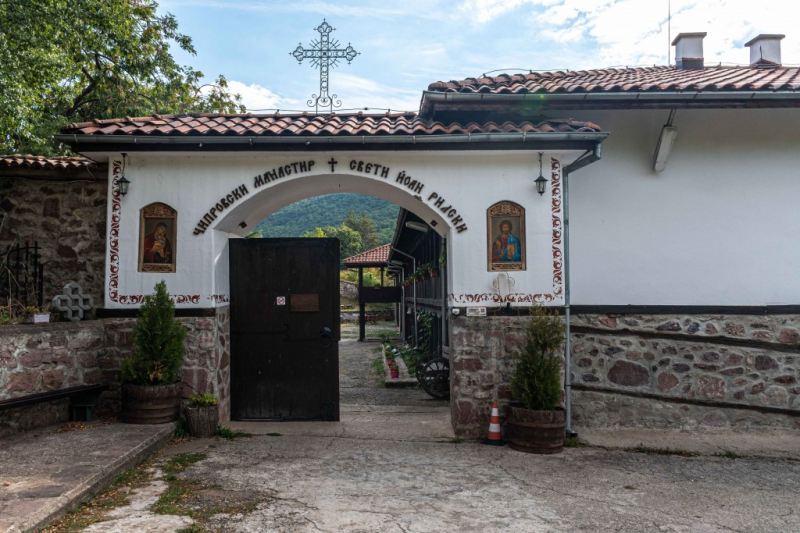
Arcodica Port -
Nestled within the Melnik Earth Pyramids and said to be the largest in the area, Rozhen Monastery is a medieval monastery with breath-taking views of the Pirin region in Bulgaria. Whilst much of Rozhen Monastery dates to the 18th century, there is evidence that it existed as early as the 890 AD, and as such the site also features as one of most beautiful historical sites in Bulgaria.
Perched on a mountain, Rozhen Monastery seems to have been constructed to melt into its surroundings. The monastery has developed over the centuries and is first recorded in written sources in 1551, although coins and other archaeological evidence testifies to medieval life at the site during the time of Byzantine Emperor Michael VIII Palaiologos in the 13th century. In the 14th century, Rozhen Monastery said to have been renowned for its school of calligraphy. Yet, one of the most famous aspects of Rozhen Monastery is its church of the Nativity of the Mother of God, also built in the Middle Ages.
In the 17th century, much of Rozhen Monastery was devastated by a fire and it underwent renovation in the later 17th and 18th centuries as the regional centre of Orthodox Christianity. Today, visitors to Rozhen Monastery can see the results of these renovations including its beautiful wood carvings and murals, some of which have survived from the 15th century. Also impressive is its stained glass, amongst the oldest in the country.
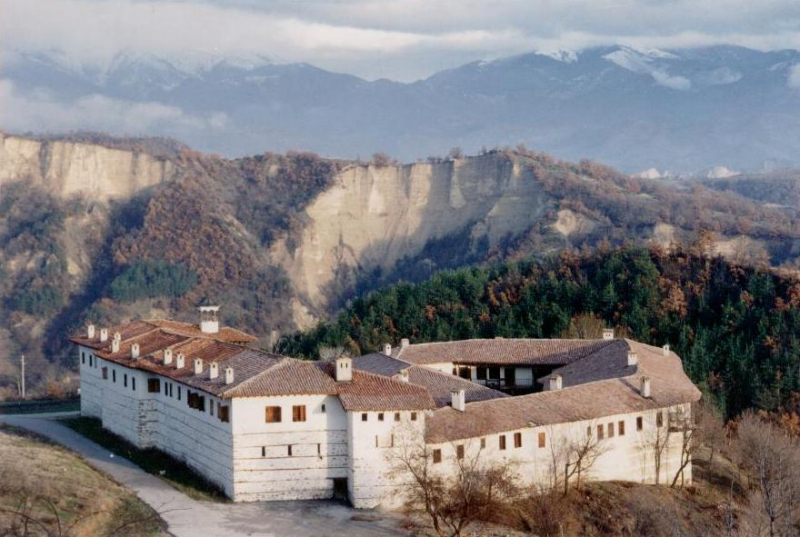
www.andey-andreev.com 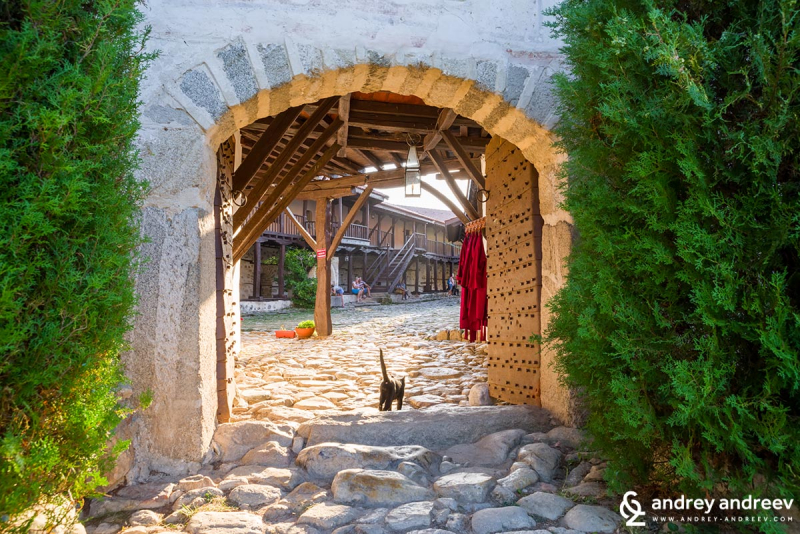
www.andey-andreev.com































